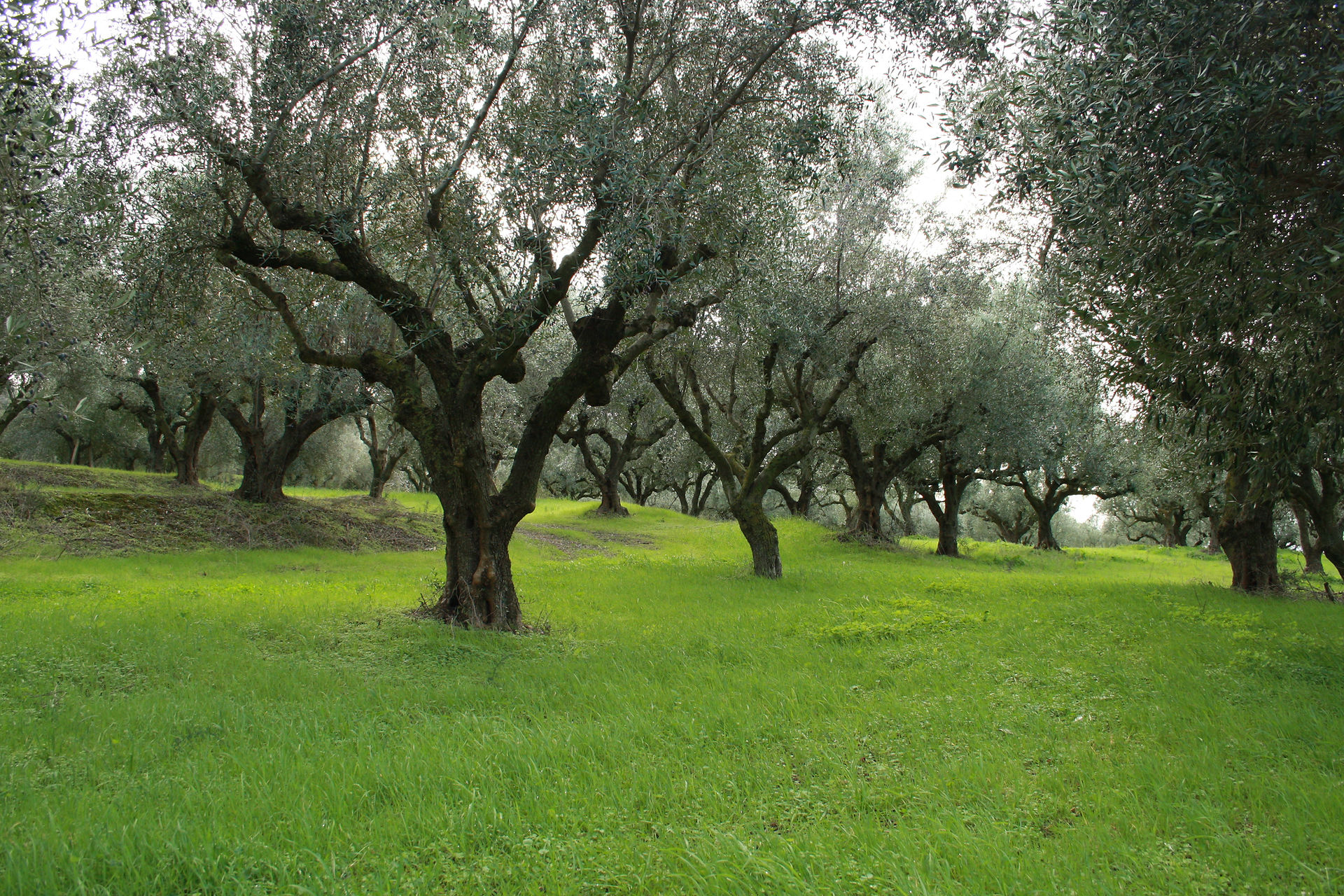

Mimi's Extra Virgin Olive Oil
filter

4 - stirring or maloxing machines
3- crushing machines
1- conveyer belt
5-centrifuge/ spinning
6- filter and weighing
Olive oil tins for filling
waiting area
2-elevated cleaning belt
stainless steel storage vats
The Press
Pressing:
The mill
Most mills in our area, Ilia, have been family owned for generations. The mill we used this year is run by the owners, Dimitri Nanos and his 5 sons, for about 4 months of the year (November to February). The rest of the time they are involved in agriculture, primarily tomatoes and watermelons. Their mill, like most others, has been upgraded with the help of EU funding and is fully certified, which dictates, among other things, the amount of time between harvesting and pressing the olives (a maximum of 24 hours), equipment type, temperature limits while pressing and how long the olives are pressed. These are all critical factors in the production of extra virgin olive oil.
Pressing takes about an hour and a half per batch. Each client is processed separately and, as is customary, the owners of the olives stay at the mill and monitor the entire process - it is incredibly noisy!
To start, the olives are poured from the bags into a vat.


Cleaning
They are then sucked onto a conveyer belt where they are cleaned with fresh water. Leaves and other objects are shaken out or removed by hand. Rocks, in particular, can cause a lot of damage to the pressing machines.

Pressing or Crushing-
The olives are fed into stainless steel container with a large rotating blade which pulps the olives. Olive paste contains pomace (solids like skin, crushed pits etc), water and oil.

Crushing blades

Crushing vats
Maloxing (stirring)
The olive pulp transferred to other stainless steel vats where it is stirred or maloxed. Stirring the pulp encourages the droplets of oil come together to form bigger droplets and separate from the water and pomace. This is the point where the pulp is gently heated (up to 82F degrees or 28C according to EU regulation) to help the process along. While higher temperatures increase production, it degrades the oil.

Centrifuge (spinning)
The stirred pulp is transferred to a centrifuge which uses the weight and high speed spinning to separate the olive oil out of the mixture.
In the first phase the solid matter or pomace is separated from the water and olive oil. Pomace is chemically refined to produce a lower quality oil.
The second spinning separates the water from the olive oil.



Olive Oil Water
Weighing
In this final phase, the olive oil is poured through a filter into a large scale for distribution.
My dad, Dionysios and son, Alex in front of a pomace mountain

Centrifuge
Press's stainless steel vats
Once it is weighed, the owner and the picker's portions are put into tins and the balance goes into the press's large stainless steel vats to be sold.
Maloxing vats
Scales